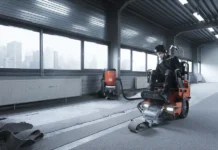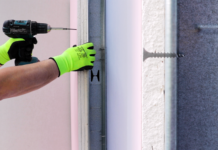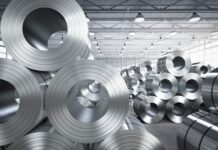CNC is short for “computer numerical control.” Unlike manual machining, in which operators are required to prompt and guide the commands of machining tools, the manufacturing process of CNC machining involves pre-programmed computer software dictating the movements of complex machinery like grinders, lathes, routers, and mills. Three-dimensional cutting tasks can be accomplished with a single set of prompts with CNC machining. So, it is easy to see why CNC machining has been revolutionizing the manufacturing industry. Although the process makes manufacturing parts and products easier and provides greater precision, operators of CNC machines can still face a number of challenges. Here are four of the most common ones.

1. Programming Errors
Manufacturing companies the world over are purchasing CNC machinery like press brakes, VMCs, HMCs, saws, and presses from reputable companies like revelationmachinery.com to enhance their manufacturing operations. While the tools themselves provide unparalleled quality and efficiency, when programmers do not have a full understanding of CNC machinery, problems can arise. Many of the challenges in CNC machining come from users having a lack of understanding of the G and M codes used for the controller or inputting the wrong data. Users could set up the machinery wrongly from the offset too. To overcome programming error challenges, machinists should have a thorough understanding of things like motion sequencing and other operations. So, ensure you or your staff have and study comprehensive user manuals and are fully versed in how to program CNC machines.
2. Using the Wrong Tools
When the wrong cutting tool is used for a task, it can result in poor quality finishes like cutter marks on the surface, rough edges, and raised marks. It is not only the wrong tools that can cause such problems. Extensive use of tools can also result in poor finishing. So, make sure your CNC tools are not blunt and an improper feed speed ratio is not used. By ensuring the right tools are used for specific machining jobs and that the tools are in prime condition, you can avoid poor results. Always choose the right tool for the job and the specific material being used.
3. Poor Maintenance
CNC machine tools have a long life. But machines with multiple moving mechanical parts need to be regularly cleaned and maintained in order to ensure they run optimally. When dirt is not cleared, materials and other debris can build-up over time. In turn, that can result in inaccuracies or machine failures. You also need to regularly check things like the levels of coolants or airflow to ensure your operations are smooth and uninterrupted. Avoiding poor maintenance issues is easy, though. Make sure you set up a detailed maintenance regime for all CNC tools that are being used.
4. Inadequate Skills and Training
When a machinist does not have the relevant experience and skills to use CNC machinery, things can start to go wrong. Too many companies rely on workers who have experience in using older models. But they need to always be up to speed on how to use the latest CNC models. Without the right organizational, planning, and programming skills, workers will be unable to optimize the yield of CNC machines. Ensure all machinists using CNC machinery are highly trained in all aspects of using the tools, or only hire people who have a thorough knowledge of each CNC machine your company uses. When you have people on board who know how to select the correct tools and sequences for individual jobs and write relevant programs, you can ensure you avoid the common challenges that come with modern CNC machining.



































































